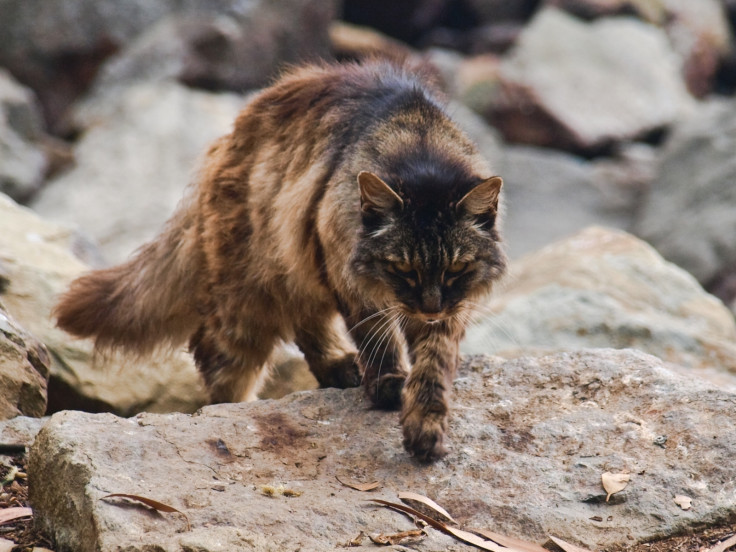The catapocalypse is here. Unstoppable appetite of feral cats driving species to extinction
New control methods must be used to stop feral cats demolishing hundreds of endangered species in Australia.
Present methods to curb Australia's feral cat population fall far short of what's needed to stop them driving still more endangered species to extinction, researchers argue in a new study. The Australian government culls cats but researchers say that these efforts are not enough to stop the damage they cause.
Feral cats have already brought 20 Australian mammal species to extinction and threaten more than 100 more.
"Given the urgency of the problem, we need a layered approach, including emergency intervention for species most at risk, and research that improves longer term management of feral cat impacts in larger areas," says study coauthor Tim Doherty of Deakin University in Australia.
Doherty argues in a paper published in Mammal Review for measures such as spraying passing cats with toxins. Present methods in use include baits made of kangaroo meat and chicken fat, laced with poisons such as Eradicat and Curiosity. The study authors argue for a suite of complementary measures to bring the feral cat population under control.
Feral cats are the same species – Felis catus – as pet cats, but they are defined as feral, stray or domestic based on how dependent upon humans they are.
The menu
Feral cats eat at least 124 endangered species in Australia, including:
- Bilbies
- Numbats
- Quokkas
- Quolls
- Bandicoots
- Black-footed rock-wallaby
Source: Department of the Environment and Energy, Australia
The Australian conservation initiative Arid Recovery conducts dissections of feral cats to analyse their diet and impacts on wildlife. "No one should underestimate the abundance or impact that cats are having in Australia," says John Read, founder of the organisation. "These cats have awesome hunting skills and will eat just about anything."
"In my experience there are very few Australian animals that are not vulnerable to cat predation at some stage, cassowaries, koalas and echidnas are probably the only animals not threatened directly by cat predation. Our work at Arid Recovery has also shown that several species, like bilbies, which were previously thought to be mainly threatened by foxes also very susceptible to cat predation."
Australia is one of the most biodiverse nations in the world, but also has the worst mammal extinction rate in the world, according to Australian Wildlife Conservancy: one in three mammal extinctions globally in the last 400 years have occurred in Australia.

© Copyright IBTimes 2025. All rights reserved.






















